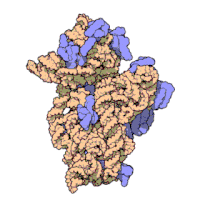
Photo from wikipedia
The determination of the Post-Mortem Interval (PMI) is an issue that has always represented a challenge in the field of forensic science. Different innovative approaches, compared to the more traditional… Click to show full abstract
The determination of the Post-Mortem Interval (PMI) is an issue that has always represented a challenge in the field of forensic science. Different innovative approaches, compared to the more traditional ones, have been tried over the years, without succeeding in being validated as successful methods for PMI estimation. In the last two decades, innovations in sequencing technologies have made it possible to generate large volumes of data, allowing all members of a bacterial community to be sequenced. The aim of this manuscript is to provide a review regarding new advances in PMI estimation through cadaveric microbiota identification using 16S rRNA sequencing, in order to correlate specific microbiome profiles obtained from different body sites to PMI. The systematic review was performed according to PRISMA guidelines. For this purpose, 800 studies were identified through database searching (Pubmed). Articles that dealt with PMI estimation in correlation with microbiome composition and contained data about species, body site of sampling, monitoring time and sequencing method were selected and ultimately a total of 25 studies were considered. The selected studies evaluated the contribution of the various body sites to determine PMI, based on microbiome sequencing, in human and animal models. The results of this systematic review highlighted that studies conducted on both animals and humans yielded results that were promising. In order to fully exploit the potential of the microbiome in the estimation of PMI, it would be desirable to identify standardized body sampling sites and specific sampling methods in order to align data obtained by different research groups.
Journal Title: Diagnostics
Year Published: 2022
Link to full text (if available)
Share on Social Media: Sign Up to like & get
recommendations!